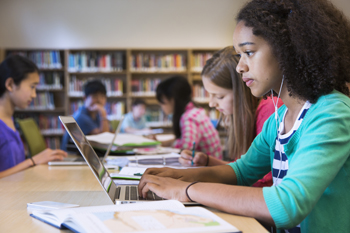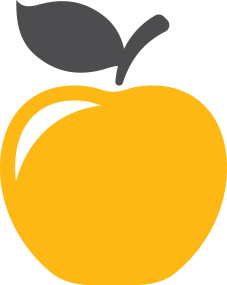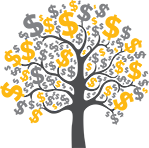Charter Schools Newsletter May 2016
In this Issue
5 Ways that Digital Tools Are Transforming the Education Space
By Eric Sheninger, Senior Fellow, International Center for Leadership in Education (ICLE)
From HMH blog The Spark
This article originally appeared in EdTech Magazine.
Digital tools are transforming essential elements of the education space. Understanding how they are affecting teaching and learning will help you figure out which tools are useful and how best to implement them.
Online tools:
- Increase collaboration: Just as social media has given rise to new definitions of community, digital tools are transforming community and the give-and-take between students and teachers. Platforms for Web-based discussion threads and creation of course or class wikis change how students can involve themselves in project-based writing assignments. A piece of student writing can become a diverse and substantive document when it is the basis for a step-by-step exchange of ideas and questions among teacher(s), peers, author(s) and mentors. When digital tools are integrated pedagogically soundly, they also promote and enhance other essential skill sets, such as communication, creativity, critical thinking, problem solving, digital literacy, entrepreneurship, global awareness and digital responsibility/citizenship.
- Innovate assessment: As assignment formats and contexts have evolved, assessment methods have had to keep pace. The openness of the online environment and the integration of such things as game attributes shape all kinds of assessment, especially formative assessment, which measures learning progress, not just learning endpoints.
- Enable learning about information and research: Research projects will always require substantive research, accurate and relevant synthesis, and defined audience-oriented approaches. However, in an information-saturated world, students are drawing on tools that help them analyze and understand multiple representations from a range of disciplines and media, such as texts, data, and photographs.
- Transform time frames around learning: In many instances, digital tools offer an asynchronous (not simultaneous) environment for response and inquiry not present in brick-and-mortar environments. Written and online-video discussions can enable the exchange of diverse views, opportunities for collaboration, and time to think and plan before responding in ways that in-class discussions do not provide. This is true for both online classrooms and “blended” classrooms—those integrating online and digital tools into a traditional learning setting.
- Incentivize the ownership of learning: According to John Dewey, the types of activities that stimulate real involvement "give pupils something to do, not something to learn; and the doing is of such a nature as to demand thinking, or the intentional noting of connections; learning naturally results." There are thousands of free digital tools that promote the art of doing. Students can now pick the best ones to create an artifact that demonstrates conceptual mastery through the construction of new knowledge, as well as the acquisition and application of essential skill sets. The process of choosing increases engagement, authenticity, and ultimately more value in the learning process. Unleash the power of digital tools and empower students to take ownership of their learning.
 |
Schools must use a dynamic combination of mindset, behaviors and skills to become places where social media and digital tools are integral and beneficial parts of a rigorous program and where they work symbiotically with active, engaged and applicable learning. This is at the heart of digital leadership. How can we take the greatest advantage of this moment in time and create compelling and challenging learning spaces for students?
The most important things to do are to give up control and to trust students and their teachers to use real-world tools to unleash creativity and a passion for learning.
After putting these tenets in the foundation, the specifics can take several forms:
- Realize that social media is the predominant tool in the world. It fosters personalization, creativity and collaboration, giving students infinite ways in which to create artifacts of their learning and knowledge.
- If 1:1 is not in the cards, use devices students already have, know and use. Bring Your Own Device (BYOD) signals to kids that teachers know and understand their basic makeup. Employing the energy surrounding personal devices allows them to use the tools that help them do what they do better. BYOD enhances learning, increases productivity, allows students to grow their research skills and gives teachers the chance to teach appropriate digital responsibility.
- Create spaces for making, collaborating and tinkering. Give students chances to build and create using real-world tools (wood shop, electronics, metal work and coding stations) and to solve open-ended, real-world problems. Bring play back into the picture. These spaces provide students with challenging problems to solve where there is no one correct solution. Through self-directed learning, students are driven to find solutions to create a product that has value.
- Structure schools so that they more accurately reflect the real world. Ubiquitous connectivity, charging stations, and casual zones that promote conversation and play increase students’ sense of belonging and engagement. Digitally astute students engage through such models as blended learning, flipped classrooms, games, makerspaces, and virtual learning.
- Give students access to open courseware and open-source technology. Inherent in these approaches is a high level of personalization and choice about what to focus on, which leads to greater ownership over learning and personalized ways to demonstrate understanding.
Ambitious, successful teaching and learning have become inherently intertwined with the digital world. Educators must be able to develop and enact rigorous, relevant instructional methods and formats while using digital tools effectively to underpin their instruction.
Students and teachers can transform learning so that it not only prepares them to excel in academic life, but also endows them with essential digital-age skills.
##
Eric Sheninger is a senior fellow and thought leader on digital leadership with the International Center for Leadership in Education (ICLE). He also runs a blog on K–12 leadership, A Principal's Reflections. |
|
|
Student Engagement Tip from a Charter Educator
Submitted by Jamie C. from Delta High School, Aptos, CA
Jamie writes:
As a charter school for at-risk youth, our only year-end evaluations are project and presentation finals. We teach thematically and at the end of the year students create a project to present to their peers that connects back to course concepts. To prepare students, we focus on positive talk and remind them that any test score or grade is only a snapshot in time of a particular experience, not indicative of who they are as a person. However we can always learn from these moments, so we also have students engage in self-reflective activities about their past finals to strategize to have success in this year's finals. |
Join Us at the National Charter Schools Conference 2016
Will you be attending this year's conference in Nashville? Tell us you're going and we'll keep you up to date with all the activities we have planned.
I'll be there!
|
Professional Learning Corner
From The Teacher Tip, a free app from Heinemann
Adapted from Reading Projects Reimagined by Dan Feigelson.
Like most activities in the life of a classroom, student projects succeed or fail in direct proportion to how big a deal we make of them. If they are treated as tangential to the regular curriculum and never discussed or celebrated publicly, chances are students will not take them seriously. On the other hand, when a teacher allows time for children to share their individual projects with the rest of the class, they begin to feel a strong sense of ownership and involvement in them.
Try this: set aside a couple of times per week for students to share their work. It should have an exponential effect; kids will start to get ideas from one another and sometimes want to try out a classmate’s approach themselves. In this way, learning becomes infectious.
Dan Feigelson On How Sharing Their Work Gets Students Excited
Feigelson, Dan. 2014. Reading Projects Reimagined: Student-Driven Conferences to Deepen Critical Thinking.
|
Provide Independent Reading for All Students
The HMH® Independent Reading Libraries offer a tailored solution providing books at the right levels to make independent reading accessible to all students, building reading stamina and confidence.
- Lexile®-based solutions for Grades K–5
- Wide reading resources of just-right books
- High-interest fiction and nonfiction titles across a variety of genres and topics
Learn more
|
Financial Resources to Help Your School Excel
Featured Grant—NCTE Donald H. Graves Award
NCTE Donald H. Graves Award from the National Council of Teachers of English (NCTE). The NCTE Donald H. Graves Award for Excellence in the Teaching of Writing was established in 2001 by Donald H. Graves and annually recognizes teachers in Grades K–6 who demonstrate an understanding of student improvement in the teaching of writing.
Average Amount: $2,000
Deadline to Apply: 5/15/2016
Apply now!
Find more grants with the Free HMH Grant Database.
|
Upcoming Events
Visit HMH® at these upcoming events!
5/25–26: New Jersey Charter Conference—Atlantic City, NJ
6/9: Arizona Education Summit—Phoenix, AZ
6/15–16: Utah Charter School Conference—Provo, UT
6/26–29: National Charter Schools Conference—Nashville, TN
|
Lexile® is a trademark of MetaMetrics, Inc., and is registered in the United States and abroad. iPod and iPad are trademarks of Apple Inc., registered in the U.S. and other countries. IOS is a registered trademark of Cisco Technology, Inc. and/or its affiliates in the United States and certain other countries. Carmen Sandiego is a trademark of HMH IP Company. Houghton Mifflin Harcourt™ is a trademark of Houghton Mifflin Harcourt. |









